Understanding Apple Measurements
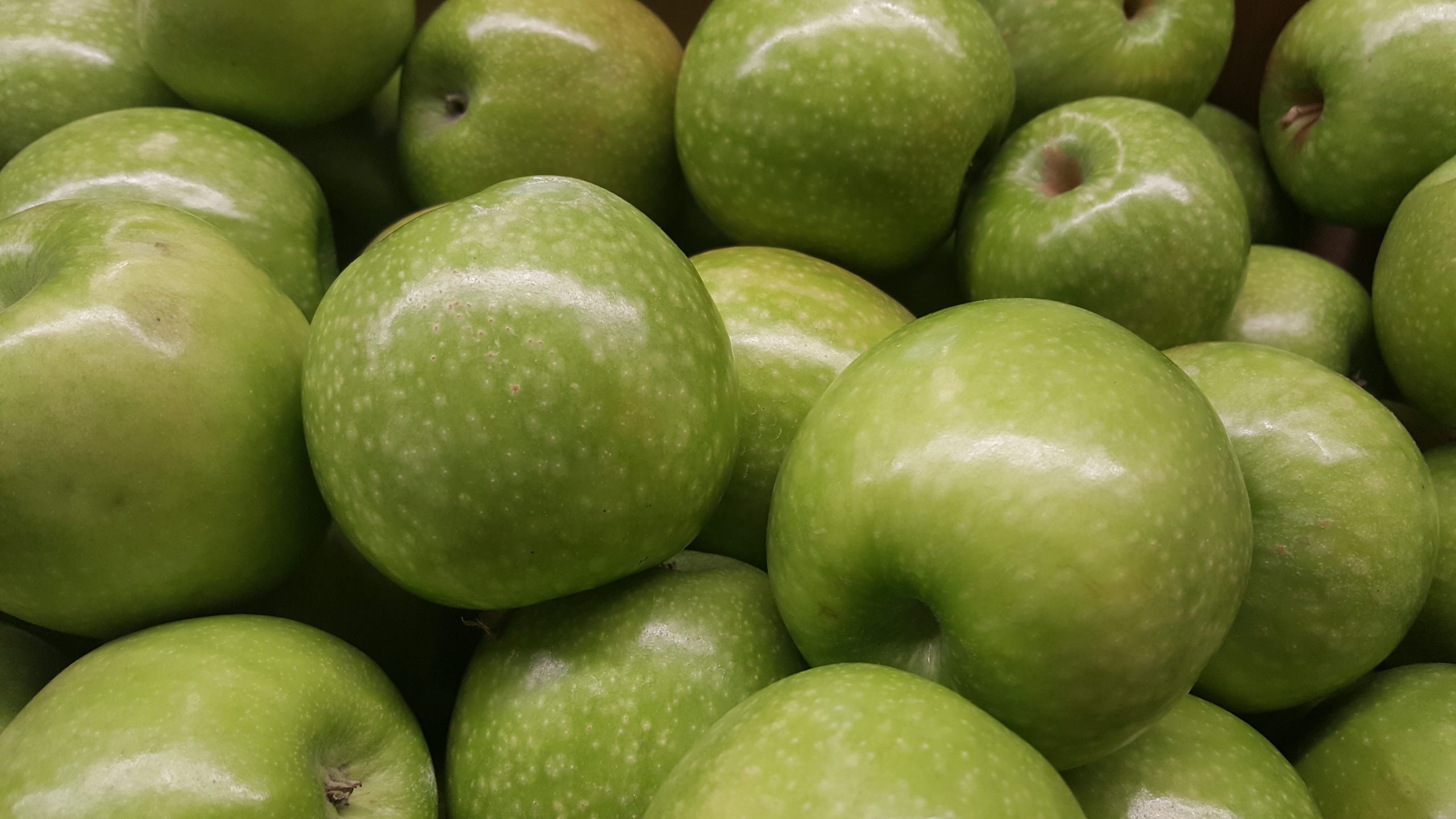
When it comes to measuring apples, understanding the concept of a bushel is essential. A bushel is a unit of measurement used in agriculture to quantify large quantities of produce. In the case of apples, a bushel can weigh between 42 to 48 pounds. Additionally, there are different units for measuring apples in a bushel, such as pounds and kilograms. It is important to know these measurements when buying apples in bulk. Different types of apples can also be found in a bushel, and it’s helpful to calculate the number of apples and approximate weight per bushel. Proper storage methods and considering the shelf life of apples are also crucial factors to keep in mind. Buying apples by the bushel offers various benefits, such as cost savings and the ability to make homemade apple products like applesauce. To choose the right quantity of apples, it is recommended to consider factors such as family size and intended use.
The Concept Of A Bushel
The concept of a bushel is an important measurement in agriculture for quantifying large quantities of produce, including apples. It represents the volume of a specific container and can differ depending on the type of fruit or vegetable. In the case of apples, a bushel measures approximately 125 apples. However, it’s important to note that a bushel is not a standardized weight but rather a measurement of volume. The weight of a bushel of apples can range between 42 to 48 pounds. Understanding the concept of a bushel is crucial when purchasing apples in bulk or calculating quantities for recipes.
Different Units For Measuring Apples In A Bushel
When it comes to measuring apples in a bushel, there are different units to consider. One commonly used unit is the peck, which is equal to one-fourth of a bushel or eight quarts. Another unit is the quart, which is equal to one-fourth of a peck or two quarts. Additionally, apples can also be measured in pounds, with the weight of a bushel ranging from 42 to 48 pounds. These different units provide flexibility in quantifying the quantity of apples in a bushel, allowing for accurate measurements based on volume or weight.
Standard Measurement For Apples
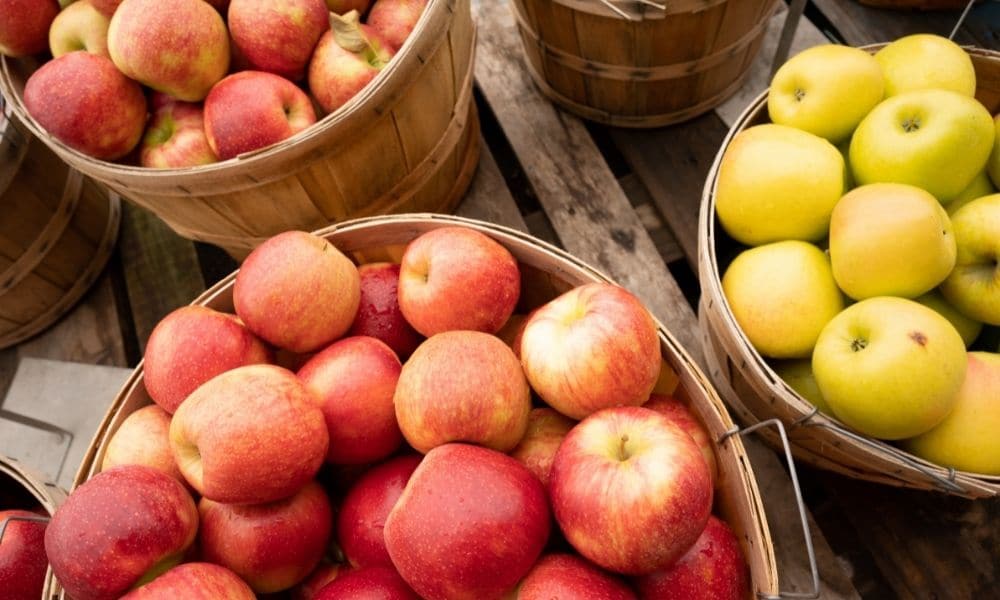
Apples are typically measured using two standard units: pounds (lbs) and kilograms (kg). In the United States, apples are commonly sold and measured in pounds. A bushel of apples can weigh anywhere from 42 to 48 pounds. This weight can vary depending on the size and density of the apples. For those who prefer to use the metric system, kilograms can be used as an alternative unit of measurement. When purchasing apples, it’s important to carefully consider the weight in order to ensure you have the right quantity for your needs.
Pounds (lbs) Used In Apple Measurements
Pounds (lbs) are the standard unit of measurement used for apples in the United States. When buying apples, they are typically sold by the pound. A bushel of apples can weigh anywhere from 42 to 48 pounds, depending on the size and density of the apples. This weight is important to consider when purchasing apples to ensure you have the right quantity for your needs. Buying apples by the pound allows for greater flexibility in terms of purchasing smaller or larger quantities based on personal preferences or recipe requirements.
Kilograms (kg) As An Alternative Metric Unit
In addition to pounds (lbs), kilograms (kg) can also be used as an alternative metric unit for measuring apples in a bushel. Kilograms are commonly used in countries that follow the metric system. To convert from pounds to kilograms, you would divide the weight in pounds by 2.2046. This provides an accurate measurement in kilograms. Using kilograms allows for a more standardized and globally recognized unit of measurement for apples, making it easier for international trade and communication within the agricultural industry.
Varieties Of Apples In A Bushel
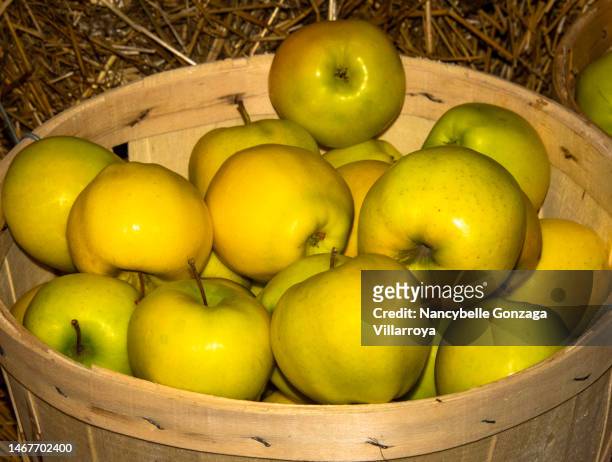
A bushel of apples can contain a variety of apple types, offering a diverse selection to consumers. Some common apple varieties found in a bushel include Granny Smith, Honeycrisp, Golden Delicious, Fuji, and Red Delicious. Each variety has its own unique flavor, texture, and color. This variety allows consumers to choose apples based on their personal preferences and culinary needs. Whether you prefer a tart apple for baking or a crisp and sweet apple for snacking, a bushel of apples offers a range of options to satisfy different taste buds.
Different Types Of Apples In A Bushel
A bushel of apples can contain a variety of apple types, offering a diverse selection to consumers. Some common apple varieties found in a bushel include Granny Smith, Honeycrisp, Golden Delicious, Fuji, and Red Delicious. Each variety has its own unique flavor, texture, and color. This variety allows consumers to choose apples based on their personal preferences and culinary needs. Whether you prefer a tart apple for baking or a crisp and sweet apple for snacking, a bushel of apples offers a range of options to satisfy different taste buds.
Popular Apple Varieties Sold By The Bushel
Popular apple varieties that are commonly sold by the bushel include Granny Smith, Honeycrisp, Golden Delicious, Fuji, and Red Delicious. These varieties are known for their distinct flavors and characteristics. Granny Smith apples are tart and crisp, making them ideal for baking. Honeycrisp apples are known for their sweet and juicy taste, perfect for snacking. Golden Delicious apples have a rich and sweet flavor, while Fuji apples are both sweet and tart. Red Delicious apples are iconic for their bright red color and sweet taste. Choosing from these popular apple varieties ensures a diverse and delicious selection when purchasing a bushel.
Calculating Apples Per Bushel
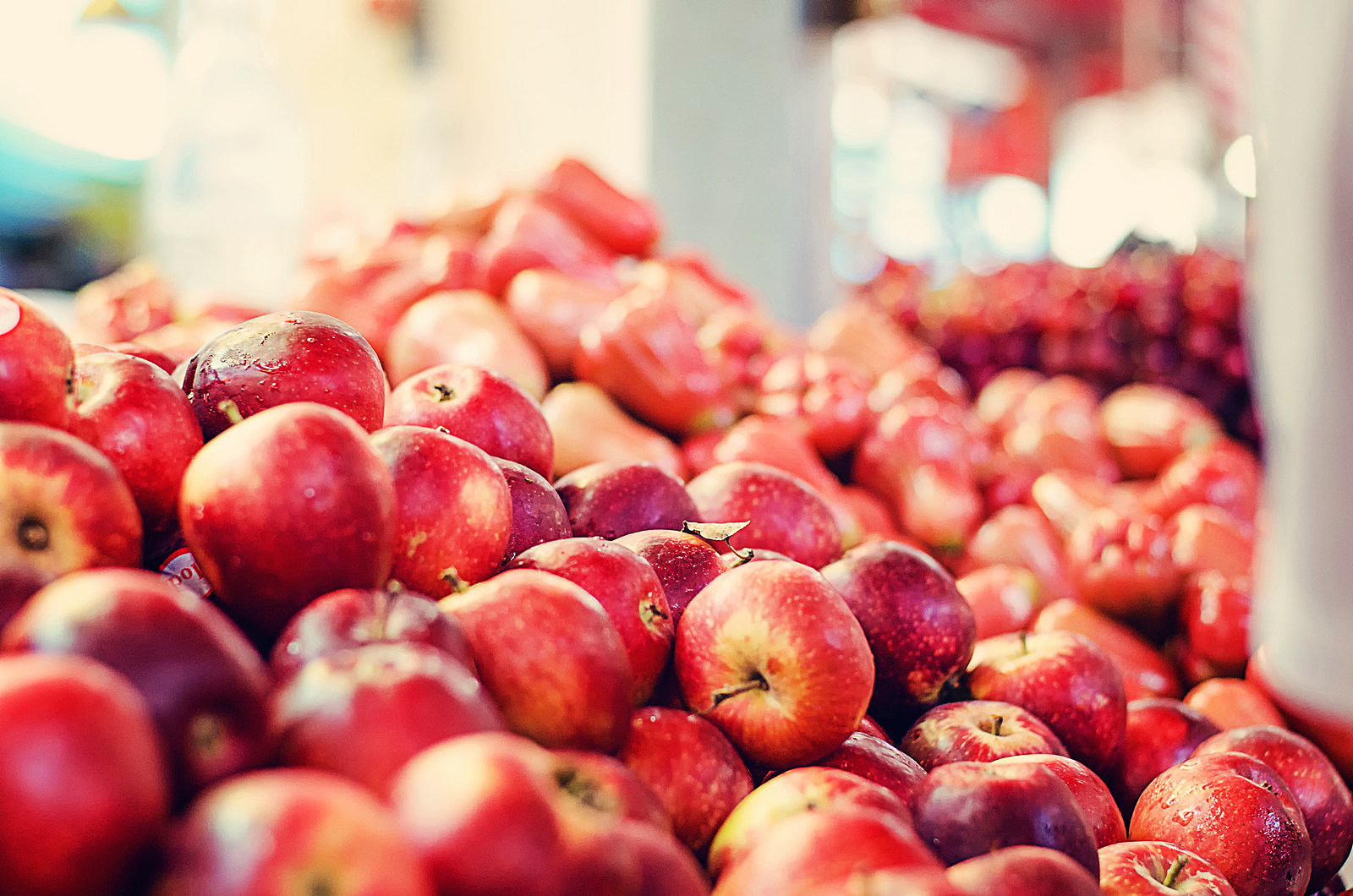
Calculating the number of apples per bushel is important for both buyers and sellers. While the exact number can vary depending on the size of the apples, a general rule of thumb is that a bushel of apples contains around 125 to 135 medium-sized apples. However, it is worth noting that larger apples will take up more space and result in a lower count per bushel. To get an accurate count, it is best to weigh the apples and divide the total weight by the average weight of each apple. This calculation ensures an accurate estimate of the number of apples in a bushel.
Determining The Number Of Apples In A Bushel
Determining the number of apples in a bushel can be done by weighing the apples and dividing the total weight by the average weight of each apple. This calculation provides an accurate estimate of the apples per bushel. While the general rule of thumb is that a bushel contains around 125 to 135 medium-sized apples, larger apples will take up more space and result in a lower count per bushel. By using weight as a measurement, it ensures a more precise and consistent calculation of the number of apples in a bushel.
Approximate Weight Of Apples In A Bushel
The weight of apples in a bushel can vary depending on the size and type of apples. On average, a bushel of apples weighs between 42 to 48 pounds (19 to 22 kilograms). However, it’s important to note that the weight can also be influenced by factors such as moisture content and the specific variety of apples. It is recommended to consider the average weight range when estimating the number of apples in a bushel. This approximation helps ensure accurate measurements and calculations for various culinary purposes.
Storage And Shelf Life
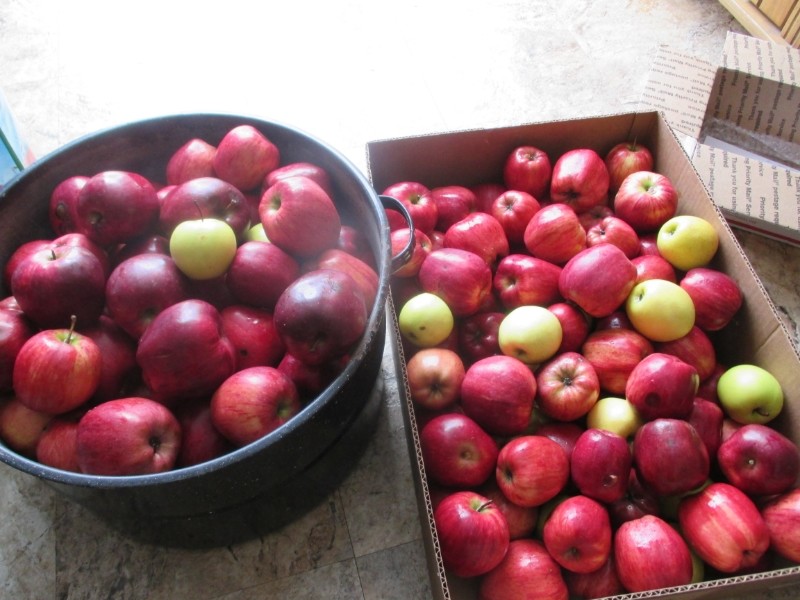
When it comes to storing apples in a bushel, it’s important to follow a few guidelines to ensure their longevity. Apples should be stored in a cool, dry place away from direct sunlight. It is recommended to keep them in a well-ventilated area to prevent moisture buildup and rot. Additionally, apples should be stored separately from other fruits and vegetables, as they release ethylene gas, which can cause spoilage. When stored properly, apples can have a shelf life of up to several weeks, allowing you to enjoy their crispness and flavors for an extended period of time.
Storing Apples In A Bushel
Storing apples in a bushel is crucial for preserving their quality and flavor. It is recommended to keep the bushel of apples in a cool, dry place away from direct sunlight. A well-ventilated area is ideal to prevent moisture buildup, which can lead to rot. It is important to store the apples separately from other fruits and vegetables, as they release ethylene gas, causing spoilage. By following these guidelines, the apples can be stored for several weeks, allowing you to enjoy their crispness and flavors for an extended period of time.
Shelf Life Of Apples When Purchased By The Bushel
When apples are purchased by the bushel, their shelf life can vary depending on the variety and storage conditions. On average, apples stored in a bushel can stay fresh for several weeks. However, it is important to monitor the apples regularly for any signs of spoilage, such as mold or soft spots. Additionally, the shelf life can be extended by storing the bushel in a cool, dry place away from direct sunlight. By carefully maintaining the storage conditions, the apples can be enjoyed for an extended period of time, allowing you to savor their delicious flavors.
Conclusion

In conclusion, exploring the world of apples in a bushel reveals a fascinating history and an abundance of culinary possibilities. From the diverse varieties available to the various units of measurement, apples provide a rich and flavorful experience. Whether you’re enjoying the traditional flavors or experimenting with new recipes, buying apples by the bushel offers convenience and freshness. By understanding the storage and shelf life of apples, you can make the most of your purchase and savor their delicious flavors for weeks. So, next time you see a bushel of apples, embrace the opportunity to indulge in this versatile and nutritious fruit.
Benefits Of Buying Apples By The Bushel
Buying apples by the bushel offers numerous benefits. Firstly, purchasing in bulk allows for cost savings compared to buying individual apples. Additionally, buying in larger quantities ensures a steady supply of apples, eliminating the need for frequent trips to the grocery store. This is especially advantageous for individuals or families who enjoy eating apples regularly or incorporating them into various recipes. Furthermore, with a bushel of apples, there is an opportunity to explore different apple varieties and experiment with new culinary creations. Overall, buying apples by the bushel provides convenience, variety, and cost-effectiveness to apple enthusiasts.
Tips For Choosing The Right Quantity Of Apples
When it comes to choosing the right quantity of apples, it is important to consider a few factors. First, determine how many apples your family consumes on a regular basis. This will help you determine the amount that will last you for a certain period. Additionally, think about how you plan to use the apples – whether for snacking, cooking, or baking. Different recipes may require different quantities. Lastly, take into account the storage space you have available. Buying too many apples that you cannot store properly may result in waste. By considering these factors, you can ensure that you choose the right quantity of apples for your needs.
FAQ About “apples In A Bushel: Exploring Apple Measurements”
Q: What is a bushel measurement in relation to apples?
A: A bushel is a unit of measurement commonly used for apples. It represents a volume that is equivalent to about 42 pounds of apples or roughly 126 medium-sized apples.
Q: How many apples are in a peck?
A: A peck is another measurement used for apples and it is equal to 10 to 14 pounds, or approximately 32 medium-sized apples.
Q: What is the difference between a bushel and a peck?
A: The main difference between a bushel and a peck is the quantity they represent. A bushel is larger and contains about 4 pecks worth of apples.
Q: How many apples can fit in a bushel basket?
A: The exact number of apples that can fit in a bushel basket depends on the size of the apples. On average, a bushel basket can hold around 125 to 150 medium-sized apples.
Q: Are bushel measurements only used for apples?
A: No, bushel measurements are not exclusive to apples. They are used to measure various fruits, grains, and other commodities. The specific weight equivalent of a bushel can vary depending on the item being measured.

A local, family-owned fast food and ice-cream diner in Wind Lake, Wisconsin. We might be small, but we are big on fast-friendly service with everything cooked to order. B-Lazy Diner offers chicken and fish fry buckets, served up with French fries and our famous homemade coleslaw and tarter sauce, along with a variety of wraps, seasoned burgers, homemade soups, and, of course, ice cream cones, sundaes, malts, and shakes.